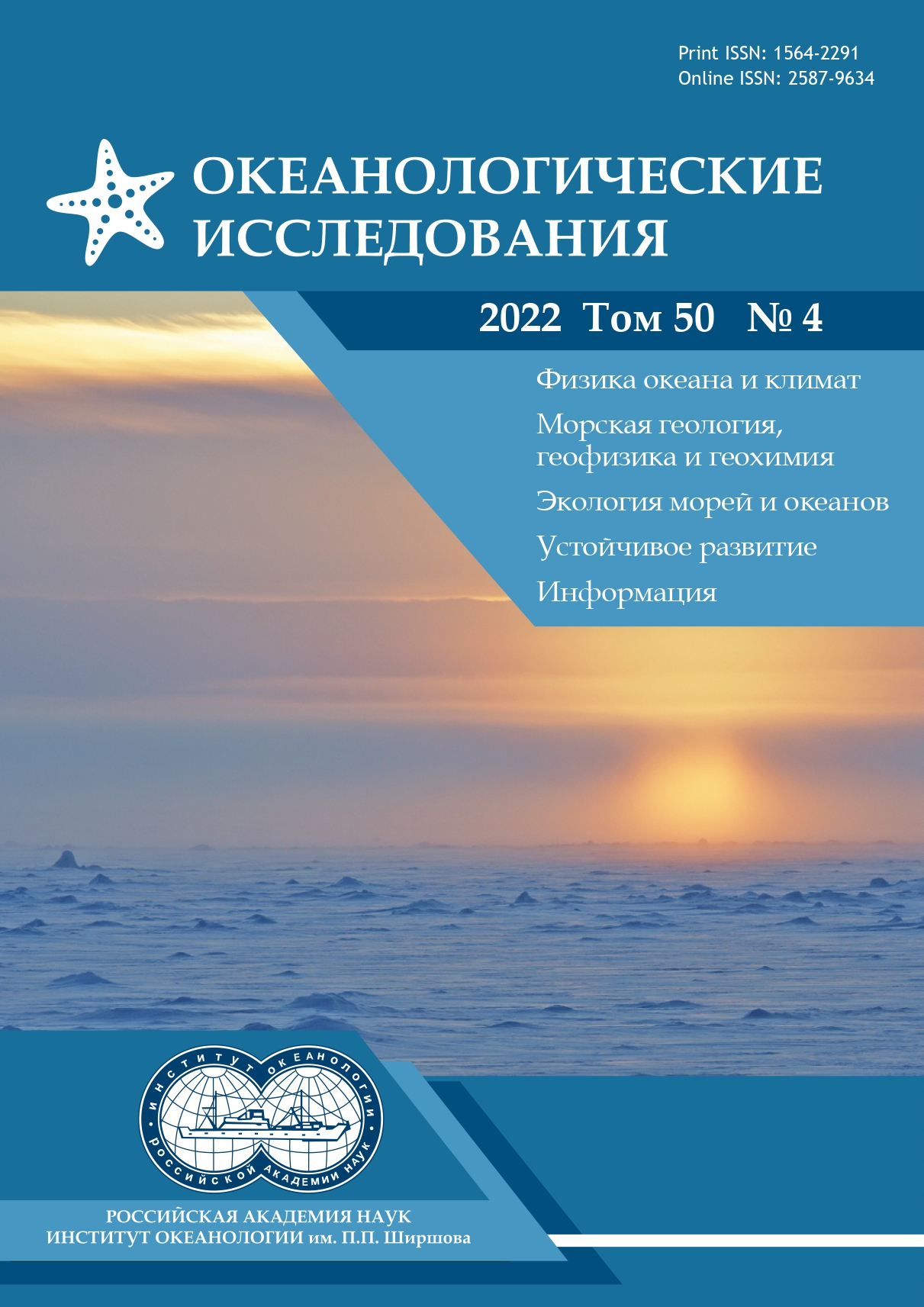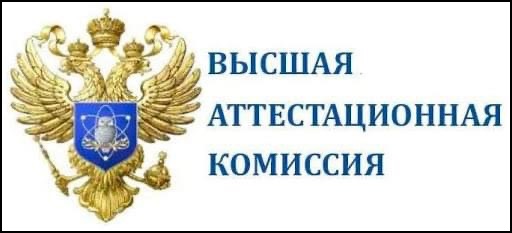АКТУАЛЬНЫЕ АСПЕКТЫ ИЗУЧЕНИЯ ПЕРИОДИЧЕСКИ ПЕРЕСЫХАЮЩИХ АКВАТОРИЙ В КОНТЕКСТЕ УГЛЕРОДНОГО ЦИКЛА (НА ПРИМЕРЕ БАССЕЙНА НИЖНЕГО ДОНА)
Аннотация
Для изучения биогеохимических циклов элементов, главным образом углерода, в переходных зонах между сушей и водой проведены исследования в водоемах дельты Дона и Западного Маныча. Выявлены основные физико-географические процессы, определяющие поставку, перенос и трансформацию органического вещества и связность водных и наземных экосистем. На основе сопоставления данных ДЗЗ в ArcGIS за период 1985–2021 гг. установлено сокращение площади поверхности водного зеркала водоемов в среднем на 15–16 % (в дельте Дона, главным образом, за счет разрушения рукотворных прудов, на Маныче – за счет понижения уровня воды). Вследствие отсутствия гидрологического потока возможно замедление биогеохимических процессов на осушенных территориях и смена одного типа процессов на другой. В дельте Дона под воздействием сгонно-нагонных явлений зафиксировано смещение геохимических барьеров в сторону реки при нагонах, увеличение доли минерализованного подземного стока при сгонах. Для системы водоемов Западного Маныча отмечено наличие градиентов солености между его отдельными частями. Исследованиями установлено, что зоны смешения пресной и соленой воды – биогеохимические «горячие точки» – характеризуются контрастным химическим составом и сильно различающимися концентрациями органического и взвешенного вещества. При продолжающемся маловодье на Нижнем Дону отмечена тенденция к существенному изменению строения верхней части профиля аллювиальных почв дельты реки. Определены районы с разной степенью проявления почвообразовательных процессов, а также основные природные и антропогенные факторы, контролирующие эти процессы.
Литература
- Александрова Л. Н., Найденова О. А. Лабораторно-практические занятия по почвоведению. Л.: Агропромиздат, 1986. 295 с.
- Аринушкина Е. В. Руководство по химическому анализу почв. М.: Изд-во МГУ, 1970. 487 с.
- Бердников С. В., Дашкевич Л. В., Кулыгин В. В. Новое состояние гидрологического режима Азовского моря в ХХI веке // Доклады Российской академии наук. Науки о Земле. 2022. Т. 503. № 1. С. 65–70. https://doi.org/10.31857/S2686739722030057.
- Гидрометеорология и гидрохимия морей СССР. Т. 5: Азовское море / Под ред. Гоптарева Н. П. и др. СПб.: Гидрометеоиздат, 1991. 234 с.
- Голубков М. С. Первичная продукция планктона и деструкция органических веществ в соленых озерах Крымского полуострова // Биология внутренних вод. М.: Наука, 2012. № 4. С. 31–38.
- Джамалов Р. Г., Фролова Н. Л., Киреева М. Б. Современные изменения водного режима рек в бассейне Дона // Водные ресурсы. 2013. Т. 40. № 6. С. 544. https://doi.org/10.7868/S0321059613060047.
- Добровольский Г. В. Почвы речных пойм центра русской равнины. 2-е изд.: перераб. и доп. М.: Изд-во МГУ, 2005. 268 с.
- Ильина Л. П., Ковда И. В., Невидомская Д. Г., Сушко К. С., Моргун Е. Г. Особенности формирования, состав и свойства сухостепных солонцевато-слитых почвенных комплексов Долины Маныча // Вестник Южного научного центра. 2014. Т. 10. № 4. С. 61–72.
- Ильина Л. П., Сушко К. С. Особенности формирования, состав и свойства сухостепных засоленных почвенных комплексов Долины Маныча // Труды Южного научного цента РАН. Т. VII: Природные и антропогенные факторы в трансформации экосистем Западного Маныча. Ростов-на-Дону: ЮНЦ РАН, 2018. С. 138–151.
- Кауричев И. С. Практикум по почвоведению. М.: Колос, 1980. 280 с.
- Клещенков А. В., Московец А. Ю. Интрузии соленых вод в дельту Дона: закономерности развития и последствия // Наука Юга России. 2021. Т. 17. № 3. С. 30–37.
- Корытный Л. М. Бассейновая концепция в природопользовании. Иркутск: Изд-во Института географии СО РАН, 2001. 163 с.
- Матишов Г. Г. Керченский пролив и дельта Дона: безопасность коммуникаций и населения // Вестник Южного научного центра РАН. 2015. Т. 11. № 1. С. 6–15.
- Матишов Г. Г. Климат, водные ресурсы и реконструкция гидротехнических сооружений с учетом интересов населения, рыболовства и сельского хозяйства, судоходства и энергетики. Доклад на расширенном заседании Президиума ЮНЦ РАН (г. Ростов-на-Дону, 25 мая 2016 г.). Ростов-на-Дону: изд-во ЮНЦ РАН, 2016. 64 с.
- Матишов Г. Г. Случаи экстремальной адвекции соленых вод в дельту Дона и льда в Керченский пролив // Доклады Академии наук. 2015. Т. 465. № 1. С. 99–103.
- Матишов Г. Г., Бердников С. В. Экстремальное затопление дельты Дона весной 2013 г. // Известия Российской академии наук. Серия географическая. 2015. № 1. С. 111–118.
- Матишов Г. Г., Григоренко К. С. Причины осолонения Таганрогского залива // Доклады Академии наук. 2017. Т. 477. № 1. С. 92–96. https://doi.org/10.7868/S086956521731019X.
- Матишов Г. Г., Григоренко К. С., Булышева Н. И., Московец А. Ю. Новые данные о роли подземных и черноморских вод в азово-донском бассейне в период маловодья // Наука юга России. 2021а Т. 17. № 2. С. 34–48.
- Матишов Г. Г., Григоренко К. С., Московец А. Ю. Механизмы осолонения Таганрогского залива в условиях экстремально низкого стока Дона // Наука Юга России. 2017. Т. 13. № 1. С. 35–43.
- Матишов Г. Г., Дашкевич Л. В., Титов В. В., Кириллова Е. Э. Анализ внутривековой природной изменчивости в Приазовье и на Нижнем Дону: причина маловодья // Наука юга России. 2021б. Т. 17. № 1. С. 13–23
- Матишов Г. Г., Чикин А. Л., Бердников С. В., Шевердяев И. В. Экстремальное наводнение в дельте Дона (23–24 марта 2013 г.) и факторы, его определяющие // Доклады Академии наук. 2014а. Т. 455. № 3. С. 342.
- Матишов Г. Г., Чикин А. Л., Бердников С. В., Шевердяев И. В., Клещенков А. В., Кириллова Е. Э. Экстремальное затопление дельты Дона весной 2013 г.: хронология, условия формирования и последствия // Вестник Южного научного центра РАН. 2014б. Т. 10. № 1. С. 17–24.
- Орлов Д. С., Гришина Л. А. Практикум по биохимии гумуса. М.: Изд-во Моск. Ун-та, 1981. 271 с.
- Панов В. Д., Лурье П. М., Ларионов Ю. А. Климат Ростовской области: вчера, сегодня, завтра. Ростов-на-Дону: Изд. ООО «Донской издательский дом», 2006. 488 с.
- Пономаренко Е. П., Сорокина В. В., Бирюков П. А. Сгонно-нагонные явления в дельте реки Дон в период с 2007 г. по 2010 г. и их прогнозирование // Вестник южного научного центра РАН. 2012. Т. 8. № 1. С. 28–37.
- Розанов Б. Г. Морфология почв: учебник для высшей школы. М.: Академический проект, 2004. 432 с.
- Саяпин В. В., Сойер В. Г., Милутка М. С., Клещенков А. В. Продукционно-деструкционные процессы и трансформация органического вещества в планктонном сообществе оз. Маныч-Гудило / Труды Южного научного цента РАН. Т. VII: Природные и антропогенные факторы в трансформации экосистем Западного Маныча. 2018. Ростов-на-Дону: ЮНЦ РАН, 2018. С. 57–68.
- Смирнов Р. Н. Почвенно-мелиоративные условия поймы и дельты нижнего течения реки Дон // Почвоведение. 1968. № 9. С. 82–91.
- Сорокина В. В., Герасюк В. С. Вариации гидрохимических показателей в водном континууме Нижний Дон – Черное море // Экология. Экономика. Информатика. Серия: Системный анализ и моделирование экономических и экологических систем. Вып. 3. Ростов-на-Дону: Изд-во ЮНЦ РАН, 2018. C. 251–257. https://doi.org/10.23885/2500-395x-2018-1-3-251–257.
- Сорокина В. В., Ивлиева О. В., Лурье П. М. Динамика стока на устьевых участках рек Дон и Кубань во второй половине XX века // Вестник Южного научного центра РАН. 2006. Т. 2. № 2. С. 58–67.
- Сорокина В. В., Московец А. Ю., Клещенков А. В. Экстремальные гидрологические явления в дельте Дона, связанные с действием ветра, в 2015–2017 гг. В сборнике: Закономерности формирования и воздействия морских, атмосферных опасных явлений и катастроф на прибрежную зону РФ в условиях глобальных климатических и индустриальных вызовов («Опасные явления – II») // Материалы II Международной научной конференции памяти члена-корреспондента РАН Д. Г. Матишова (г. Ростов-на-Дону, 6–10 июля 2020 г.). Ростов-на-Дону: Изд-во ЮНЦ РАН, 2020. С. 95–100.
- Сорокина В. В., Титов В. В., Вереин Р. В., Попов Ю. В., Ковалева Г. В., Гаврилова И. Ю. Первые комплексные данные о пыльной буре в восточном Приазовье в конце сентября – начале октября 2020 года. В сборнике: Закономерности формирования и воздействия морских, атмосферных опасных явлений и катастроф на прибрежную зону РФ в условиях глобальных климатических и индустриальных вызовов («Опасные явления – III»). Материалы III Международной научной конференции памяти члена-корреспондента РАН Д. Г. Матишова (г. Ростов-на-Дону, 16–18 июля 2021 г.). Ростов-на-Дону: Изд-во ЮНЦ РАН, 2021. С. 132–138.
- Справочник «Органическое вещество Азовского моря и прилегающих районов Черного моря». http://atlas.ssc-ras.ru/sitemap-organic.html (дата обращения 14.09.2022).
- Труды Южного научного центра Российской академии наук / гл. ред. акад. Г. Г. Матишов. Том VII: Природные и антропогенные факторы в трансформации экосистемы Западного Маныча / отв. ред. д.г.н. С. В. Бердников. Ростов-на-Дону: Изд-во ЮНЦ РАН, 2018. 256 с.
- Экологический атлас Азовского моря / Матишов Г. Г. (гл. ред.), Голубева Н. И. (отв. ред.), Сорокина В. В. (отв. ред.). Ростов-на-Дону: Изд-во ЮНЦ РАН, 2011. 328 с.
- Blöschl et al. Changing climate shifts timing of European floods // Science. 2017. 357 (6351). P. 588–590. https://doi.org/10.1126/science.aan2506.
- Carbon Cascades from Land to Ocean in the Anthropocene. https://cordis.europa.eu/project/id/643052 (дата обращения 20.11.2022).
- Hanqiu Xu. Modification of normalised difference water index (NDWI) to enhance open water features in remotely sensed imagery // International Journal of Remote Sensing. 2006. 27:14. P. 3025–3033. https://doi.org/10.1080/01431160600589179.
- McClain M. E., Boyer E. W., Dent C. L. et al. Biogeochemical Hot Spots and Hot Moments at the Interface of Terrestrial and Aquatic Ecosystems // Ecosystems. 2003. Vol. 6. P. 301–312. https://doi.org/10.1007/s10021-003-0161-9.
- U.S. DOE. Research Priorities to Incorporate Terrestrial-Aquatic Interfaces in Earth System Models: Workshop Report, DOE/SC-0187, U.S. Department of Energy Office of Science. 2017. tes.science.energy.gov.
- What are the band designations for the Landsat satellites? https://www.usgs.gov/faqs/what-are-band-designations-landsat-satellites (дата обращения 20.11.2022).
- Xenopoulos M., Downing J. A., Kumar M. D., Menden-Deuer S., Voss M. Headwaters To Oceans: Ecological and Biogeochemical Contrasts Across the Aquatic Continuum // Limnol. Oceanogr. 2017. 62. Р. S3–S14. https://doi.org/10.1002/lno.10721.
Передача авторских прав происходит на основании лицензионного договора между Автором и Федеральным государственным бюджетным учреждением науки Институт океанологии им. П.П. Ширшова Российской академии наук (ИО РАН)













